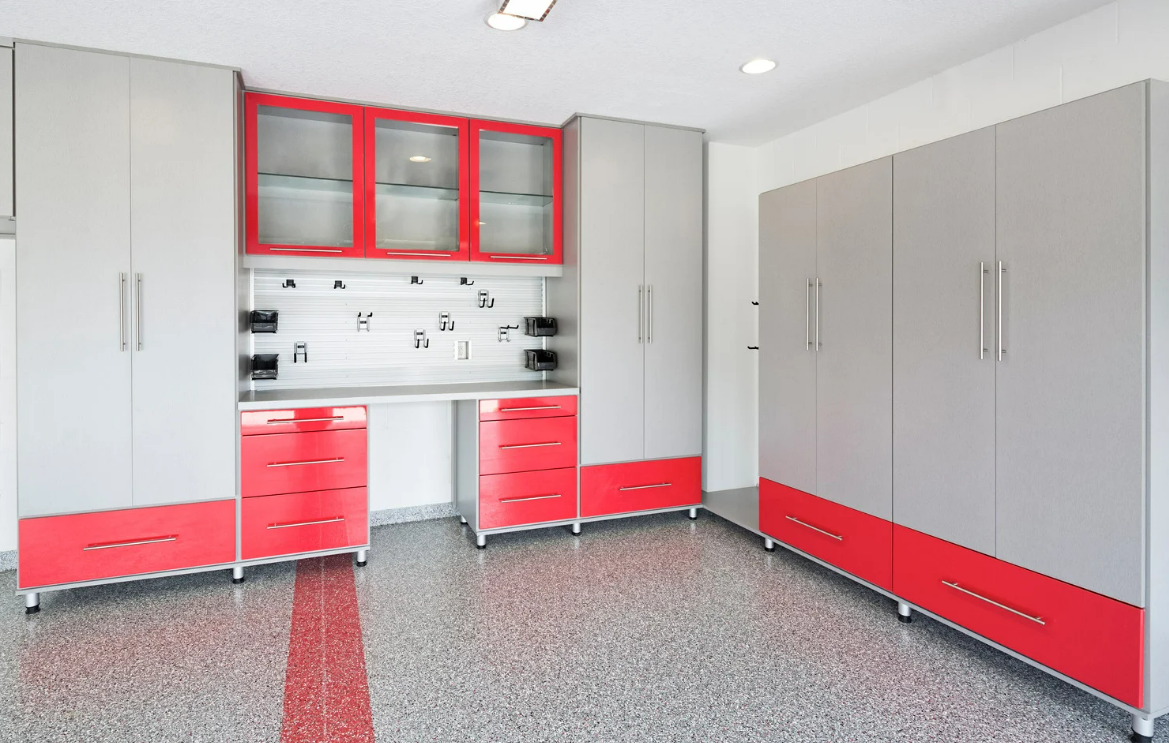Home Storage Solutions for Energy Equipment
With more people installing solar panels, home battery systems, and backup generators, the way we handle residential energy gear does matter. But all these new setups bring a basic (and surprisingly easy to forget) challenge: you need smart, safe storage for your equipment.
The way you store your energy devices matters more than you might think. Good storage not only keeps your gear working longer, it also helps create a safer and more efficient home. Whether you’re dealing with inverters, power walls, lithium-ion batteries, or just a couple of backup power packs, you must maintain a solid storage plan.
This guide will walk through efficient home storage solutions for energy equipment and share a few practical tips to help you make the most of your available space.

Photo by Kindel Media on Pexels
Why Proper Storage Matters
Before we get into details or product picks, let’s take a second to look at why any of this actually matters.
1. Safety
If you store equipment the wrong way, you’re asking for trouble. Batteries – especially lithium-ion ones – need to be kept away from moisture, big swings in temperature, and anything you might accidentally bump or drop on them. Don’t overlook this: a bad short or an overheated battery isn’t just a headache; it can start a fire or, in some cases, even explode.
2. Efficiency and Longevity
Leaving your gear to collect dust in the garage, putting it in a damp basement, or cramming it into a tight closet – those options will wear it out a lot faster. With the right setup, you’ll get airflow, stable temps, and way more protection against accidents, which means your stuff keeps working properly for years instead of months.
3. Organization and Accessibility
In many homes, energy systems are expanding. As you add solar chargers, inverters, or backup batteries, keeping everything organized is essential for easy access, maintenance, and upgrades. You don’t want to be scrambling for your generator manual or battery cables during a blackout.
Heavy-Duty Storage Cabinets: The Foundation of Home Energy Organization
For most homeowners, the best investment in energy equipment storage is heavy-duty storage cabinets for garage use. These units are built from industrial-grade steel, often powder-coated for rust resistance, and offer secure, lockable doors with adjustable shelving.
Benefits of Heavy-Duty Cabinets
- Weight capacity: These cabinets can support heavy items like inverters or deep-cycle batteries without sagging or bending.
- Ventilation options: Many come with perforated panels or can be customized with exhaust fans for battery storage.
- Lockable and secure: Protects your valuable and sometimes hazardous energy equipment from children, pets, or unauthorized access.
- Resistant to environmental damage: These cabinets offer protection against dust, humidity, and temperature swings – ideal for garages, basements, or sheds.
Ideal Cabinet Features for Energy Equipment
When choosing a heavy-duty storage cabinet, look for:
- 12- to 16-gauge welded steel construction
- Adjustable shelves for flexible configuration
- Cable management ports or grommets
- Powder-coated or rust-resistant finish
- Optional caster wheels for mobility
- Locking mechanisms for security

Best Places in Your Home for Energy Equipment Storage
1. Garage
It is a go-to location for storing large energy systems. The garage offers more space and is typically away from living areas. Install a wall-mounted heavy-duty cabinet or a free-standing unit near the power panel or inverter system.
Tip: Make sure the garage is dry and insulated if you live in an area with temperature extremes.
2. Basement
Basements are suitable for quieter or less bulky equipment. However, moisture is a major concern. Use raised heavy-duty cabinets with rubber feet or place them on treated wood planks to keep them off damp floors.
Pro Tip: Install a dehumidifier and monitor humidity levels. Batteries and electronics degrade faster in high humidity.
3. Utility Room or Mechanical Closet
If you have a designated utility room, make the most of it. Use stackable or wall-mounted cabinets and clearly label everything from battery banks to toolkits.
Safety Note: Ensure proper airflow if storing batteries or inverters in enclosed areas.
Storage Tips for Different Energy Components
Batteries
- Keep out of direct sunlight. Store in a cool, dry place.
- Use cabinets with ventilation. Batteries can off-gas or heat up during operation.
- Never store on concrete floors directly. This can leach moisture and degrade performance.
Inverters and Charge Controllers
- Mount these on fire-rated surfaces or inside ventilated cabinets.
- Ensure proper clearance around cooling fans.
- Label all wires and keep documentation stored in a dry cabinet pocket.
Solar Accessories (Cables, Brackets, Fuses)
- Use divided drawers or small lockable compartments within a larger cabinet.
- Group items by system voltage (e.g., 12V, 24V) for clarity.
- Label everything clearly for fast access during repairs or upgrades.
Backup Generators
- If portable, store with fuel (in certified containers) in a nearby but ventilated compartment.
- Ensure oil, filters, and manuals are organized in a labeled container nearby.
Organization and Inventory Best Practices
Even the most advanced equipment is only as effective as your ability to manage it. Here are a few professional organizing tips:
- Inventory List: Maintain a written or digital log of all stored items with purchase dates, service records, and replacement intervals.
- Color Coding: Use colored zip ties or tags to organize wires or identify system voltage.
- Label Everything: From shelf labels to cable tags, clear labeling prevents confusion and speeds up maintenance.
- Accessibility: Heavier items should go at waist height to avoid injury. Frequently accessed items should be front and center.
Safety Considerations When Storing Energy Equipment
- Fire Safety: Never store flammable materials near battery banks or inverters. Place a Class C fire extinguisher.
- Temperature Control: Avoid storing energy equipment in locations that experience rapid temperature swings.
- Ventilation: Especially important for battery systems and enclosed storage. Consider small fans or vent holes.
- Childproofing: Lock cabinets and ensure high-voltage equipment is inaccessible to children or pets.
Eco-Friendly and Future-Proof Storage Options
If you’re concerned about sustainability, look into eco-friendly storage solutions. Some companies now offer cabinets made from recycled steel or renewable materials.
Additionally, as your home’s energy needs grow, consider modular cabinet systems that can expand with your infrastructure – ideal for anyone planning to add an electric vehicle charger or expand their solar array.
Conclusion
As energy systems become more integral to the modern home, so does the need to store that equipment safely and effectively. Investing in high-quality, heavy-duty storage cabinets can transform a cluttered and risky setup into a clean, efficient, and secure space.
Everything counts when you’re building out your energy setup – from picking the best materials to figuring out exactly where your cabinets should go. Every choice you make adds up to a safer, longer-lasting, and better-performing system. If you put just as much thought into storage as you do into installing or maintaining your equipment, your home will stay organized and energy-ready for the long haul.

